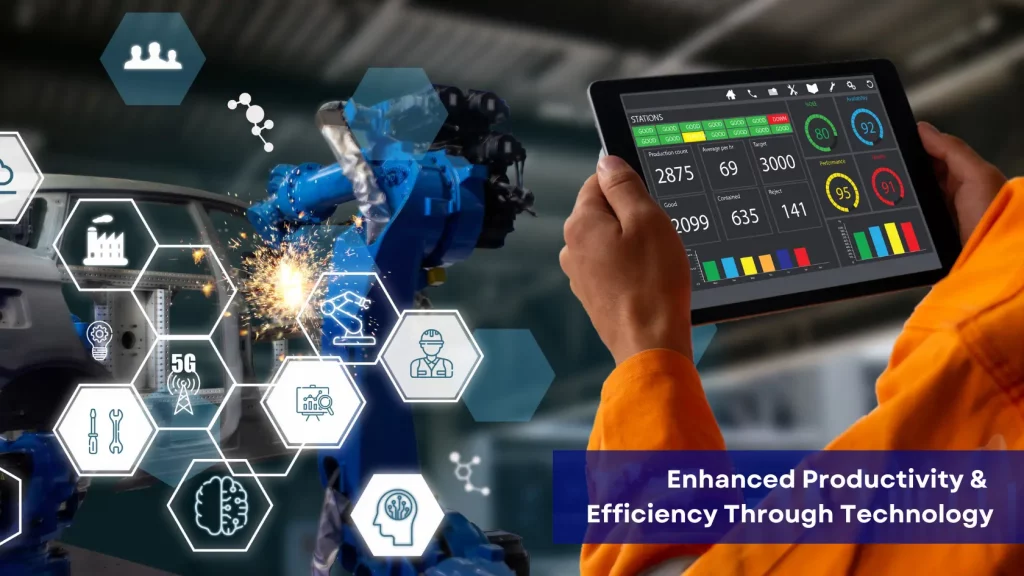
In the face of an uncertain global landscape, companies must adapt to remain buoyant. Fortunately, new technologies, improved planning, and better data usage provide significant opportunities for companies to become more resilient. Here are five unique predictions for manufacturing which outline how companies can become more resilient in an uncertain landscape.
1. Using Digital Technology and Improving Accuracy With ESG
By 2024, ESG governance will have a great impact on how 70% of manufacturers monitor their environmental, social, and governance initiatives. This is highly important to investors, partners, customers and employees as they assess organisations since ESG serves as an invaluable indicator that can help them make informed decisions.
With ESG, manufacturers are presently concentrating on the environmental component – or “E” aspect – to demonstrate their commitment to decarbonisation. To meet reporting needs, regardless of how intricate regulations and ratings may be, many willingly comply with revealing various aspects of their operations.
On top of that, new regulatory frameworks have been established worldwide in order for companies to more systematically report on and show progress towards their ESG goals. In terms of predictions for manufacturing, by 2023, it will be essential for manufacturers to integrate innovative technology into their operations to create reliable carbon metrics with consistent and comparable data.
Also Read: 100 Companies Responsible For 71% Of GHG Emissions
2. The Increasing Importance Of Digital Twins In Predictions for Manufacturing
By the year 2024, many manufacturers will be hiring resources specialised in digital science to help them create their own digital twin strategy.
With an increasing use of applications and machines data collection is skyrocketing with estimates showing that by 2025 there could be as much as 41.6 billion devices connected to the internet making it possible for real-time decisions based on the amount of collected data. Unfortunately, a lot of manufacturing companies don’t possess the necessary skills or resources to maximise this opportunity offered the available information.
Few predictions for manufacturing are as important as digital twins but the only way to truly benefit, companies should prioritise hiring data scientists or chief data officers to maintain the accuracy and sources of data. They must also take a forward approach by mapping out real-world needs from use cases to challenges that can be improved through pilot programmes to scale these plans across other manufacturing operations.
Recommended: IoT In Manufacturing
3. Navigating the Unpredictable Macroeconomic Future
The ever-changing geopolitical and macroeconomic environment is making it increasingly difficult for companies to remain on top. To survive and thrive in this climate, digitalisation has become a necessity and is one of the other noteworthy predictions for manufacturing worth considering.
As we look to 2023 predictions for manufacturing, the market will likely remain uncertain and manufacturers must now review their digital transformation strategies in order to protect their investments. To do this successfully, they should focus on tangible business requirements, use cases and certain challenges. Additionally, pilot programmes should be fully integrated into mainstream operations across a broad manufacturing scope for maximum impact.
Manufacturers must accelerate their people enablement plans to guarantee that they possess the necessary digital skills for success. Digital transformation has an intense effect on a company’s income and profit performance, so it is imperative to prioritise business objectives over technology capabilities at this point.
4. Improved Connectivity Will Result In Better Productivity And Efficiency
In some cases, predictions for manufacturing can be hit and miss but better connectivity for higher levels of efficiency is a definite!
With the introduction of modern manufacturing machinery that can easily be integrated with business systems, many manufacturers still find themselves struggling to keep up. This is largely due to expensive production equipment from an era before computer integration was commonplace. Consequently, these companies are at risk of being left behind in terms of technology advancements.
If manufacturing companies want to optimise their operations, they must integrate sensors into their operations to gain real-time insight into the performance of their assets. This will enable them to anticipate any potential maintenance requirements and move forward with digital transformation without compromising on results or making costly capital investments.
5. Artificial Intelligence Will Become Increasingly Invaluable
Among the most trending predictions for manufacturing is Artificial Intelligence (AI). As the world of manufacturing advances and digitisation catches up, a vast amount of data is now easily accessible. By utilising AI and machine learning capabilities, manufacturers are able to make informed decisions that lead to autonomous standard production lines with greater accuracy than ever before.
By 2025, manufacturers should be utilising the power of AI to make better business decisions. With an estimated market value of $16.3 billion by 2027 and its potential for optimising factory operations, staff development, and sustainability objectives – it is likely that AI will become even more integrated into business practices worldwide in the years to come!
Conclusion: Predictions for Manufacturing
In summary, resilience, agility and adaptability are all reliant on technology to enable businesses to remain relevant and profitable. Manufacturers must take advantage of the latest technologies, invest in data skills and assets, while concentrating on core business needs with real life cases or problems they may experience to ensure organisational durability no matter what the landscape may look like.
Moreover, manufacturers should focus on better connectivity, improved asset management through the integration of AI and machine learning capabilities, as well as autonomous production lines. This will help them to achieve higher levels of productivity and efficiency while reducing capital expenditure. Predictions for manufacturing are essential to remain competitive and successful in the current market climate.
Please support us by following PRV Engineering on LinkedIn and read our blog for all the latest in engineering, manufacturing and technology.


 Mail:
Mail: 




